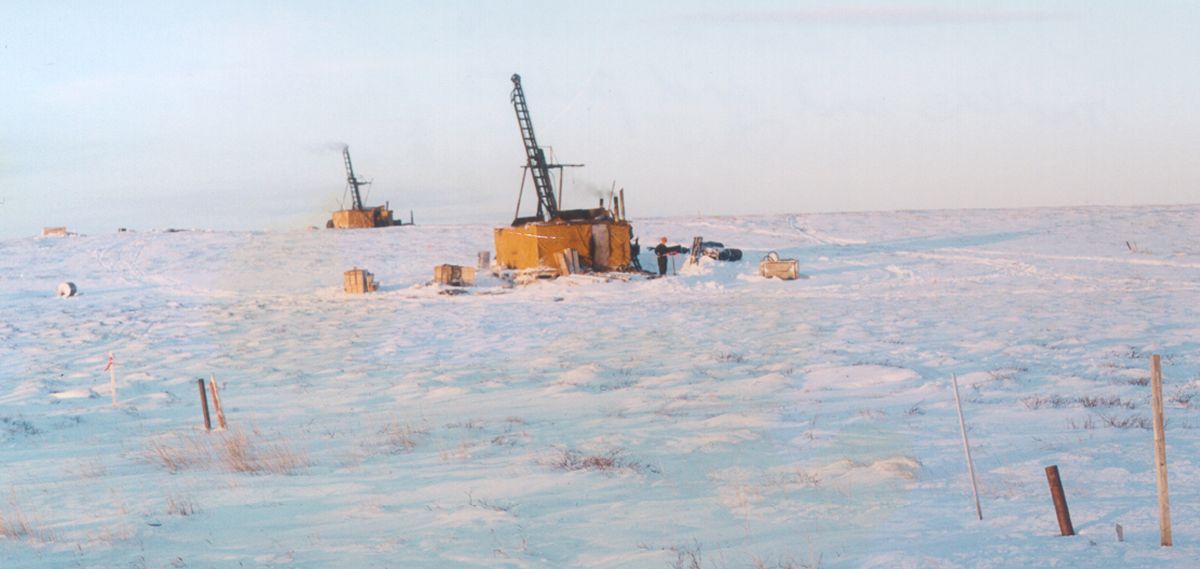History
By 1962, fifty-three year old Murray Watts was already an accomplished explorer and mining engineer, with multiple major discoveries under his belt. In May of that year, the consulting firm of Watts, Griffis and McOuat was founded, and while the road to success saw a diversity of commodities, it was forged in iron.
Iron Ore Company of Canada
Arthur Thomas Griffis (1912-1982)WGM's early development was firmly rooted in the steel industry. Arthur Thomas Griffis figured prominently in the discovery of five iron ore deposits for the Iron Ore Company of Canada, and the discovery of the copper deposit which provided longevity to the McIntyre Porcupine Gold Mine. Tom's enthusiastic support for the Nanisivik Zn-Pb deposit on Baffin Island led to WGM's feasibility study on which project financing was based.
Mary River Deposit
Murray Watts (1909-1982)Murray Watts is credited with the discovery of the Raglan Ni Deposits and the Asbestos Hill Mine early in his career, however, it is his discovery of the world-class Mary River Fe deposits on Baffin Island that rings resonant today, representing the most significant undeveloped high-grade iron resource on the planet, and potentially one of its largest.
Asbestos Hill
Jack McOuat (1933-2013)It wasn't until the Asbestos Hill days that Jack McOuat, Murray Watts and Tom Griffis hooked up. One of the original founders, having joined the company in 1962, Ross Lawrence added his skills in mineral valuation, mineral policy and project management, while Jack brought a keen appreciation of the cyclical nature of the business.
China and Beyond
Today, the firm continues to operate from its headquarters in the heart of Toronto's financial district. With the addition of a representative office in Beijing's Central Business District in 2010, the firm is poised to meet the demands of its global clients in the new millennium.
Down Under
Shortly after Murray, Tom, Jack and Ross gave birth to the company, WGM opened its first i nternational office in Sydney, Australia in 1965. As the nickel boom waned WGM closed its office in 1972 and looked abroad for new opportunities. Recognizing the potential in Alaska, WGM opened an office in Anchorage in 1972 under the management of Riz Bigelow, whose subsequent participation in the discovery of Red Dog and Green's Creek soon paid dividends to the WGM reputation. WGM's direct equity participation in the Pogo Mine discovery was the result of technical expertise and the opportunity to assemble a top notch exploration consortium.






Middle East
Having won a major project management contract in Saudi Arabia, WGM opened its Jeddah office in 1972, an operational centre which lasted until the mid-1980's. WGM's work resulted in the discovery of the Ghurrayah Ta-Nb deposit. Out of the Saudi projects, a team was assembled which established an office in Yemen from 1991 through 1995. WGM's services to the Geological Survey in support of exploration training and investment promotion projects under World Bank financing soon resulted in a series of new exploration licences acquired by local and foreign companies, including Chuck Fipke's Cantex Development Co.
South America
WGM's work in Yemen soon generated spin-off projects and satellite offices in Ghana, Argentina and Ecuador. An office was established in Indonesia in 1996 where WGM's exploration management led to the discovery of several new gold prospects in Central Java which have not yet been sufficiently explored for a variety of non-technical reasons. Over the years, WGM played a significant role in the development of such gold mines as Fort Knox in Alaska and Woodsreef, in New South Wales as well as the Al Masane Pb-Zn deposit in Saudi Arabia.
